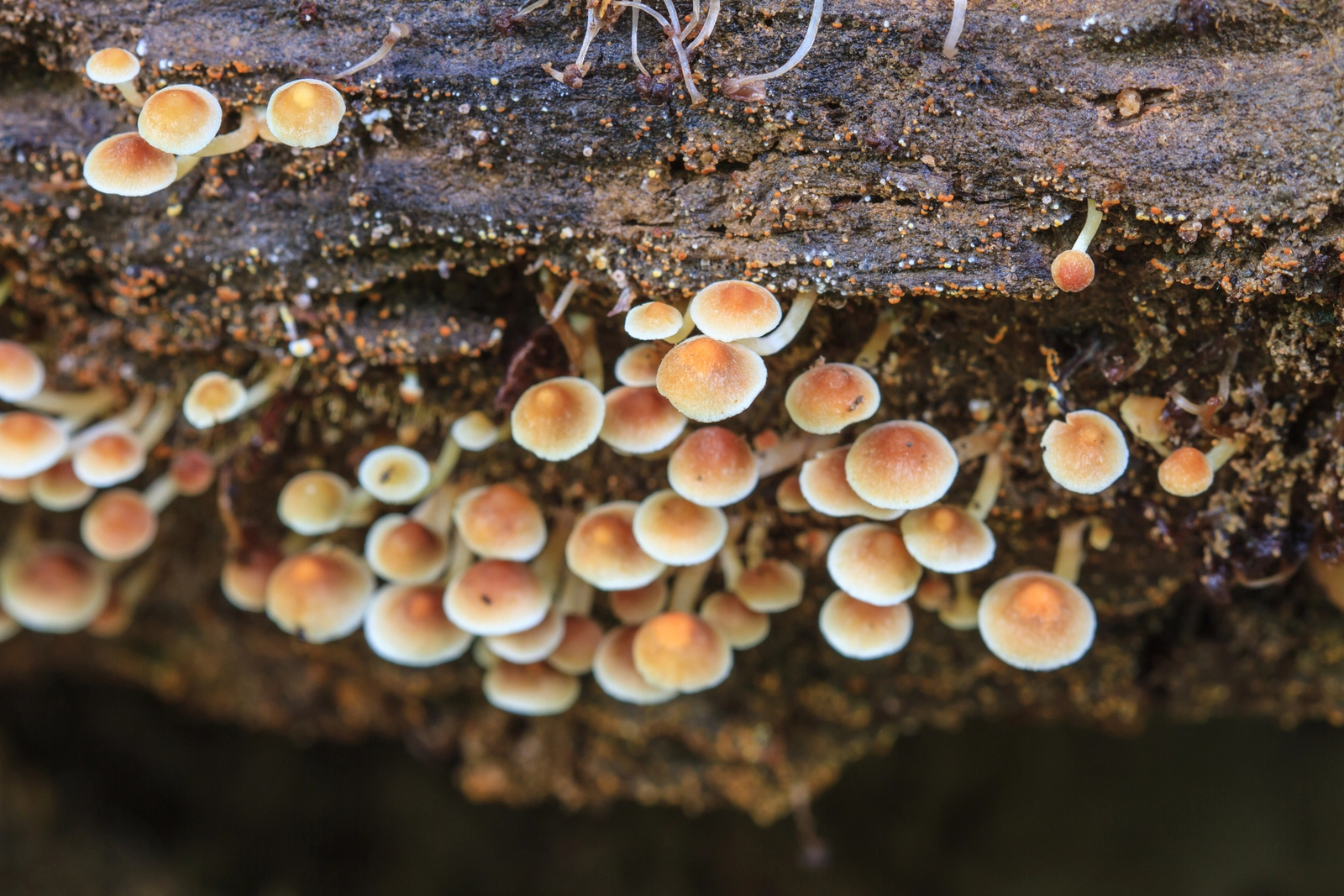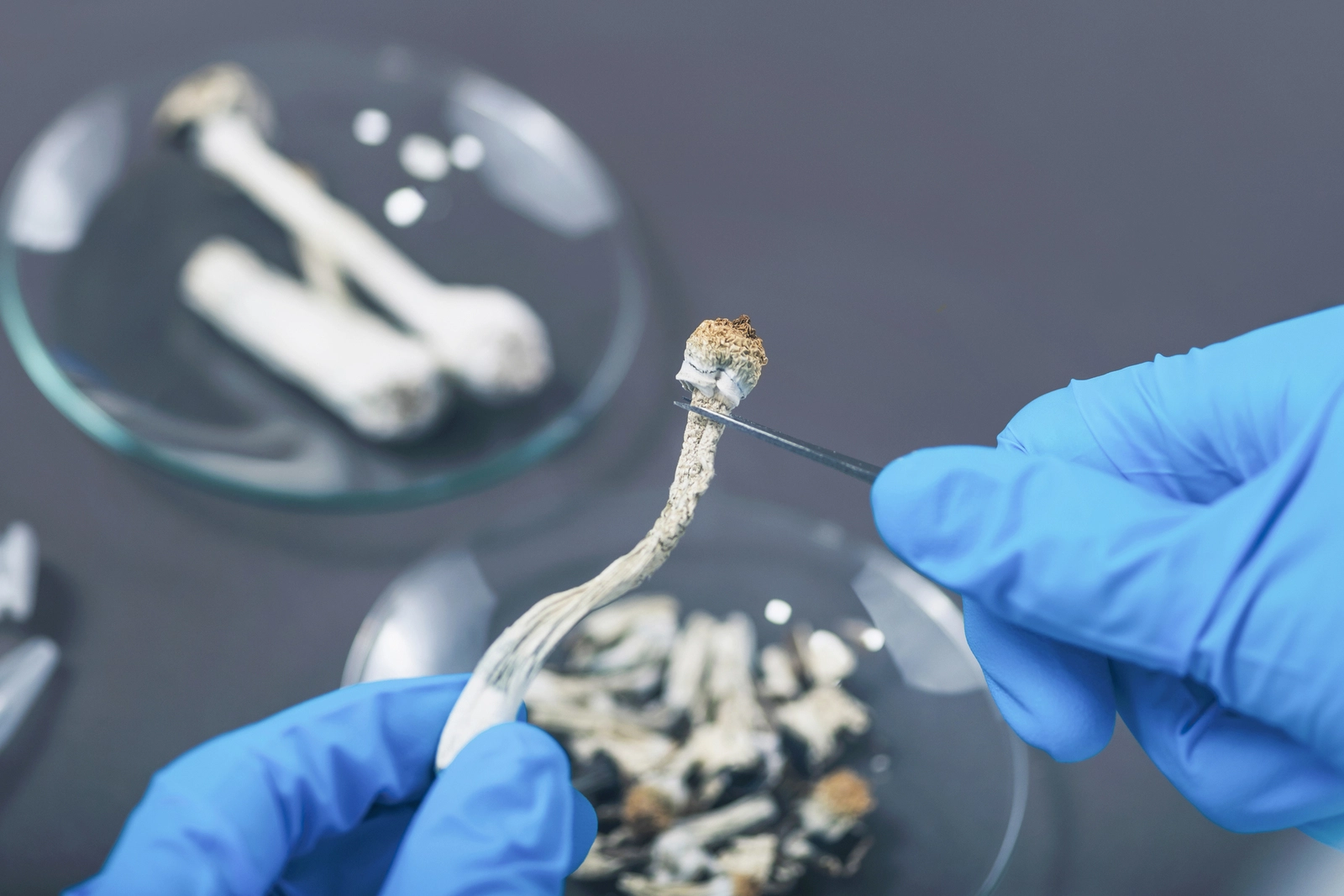Substances | 3 min read
Magic Mushroom History 101
Medically Reviewed By

On June 21, 2025
Written By
On June 21, 2025

What you will learn
- There is evidence of magic mushroom consumption in Central America dating back to ancient civilizations.
- The hippie movement embraced the use of psychedelics, following early influencers like Bob Dylan and John Lennon.
- Richard Nixon responded to the widespread use of psychoactive substances by introducing the “War on Drugs” in America in the early 1970s.
- Modern-day researchers are studying the potential mental health benefits of psilocybin, the psychoactive substance found in magic mushrooms.
- As of today, magic mushrooms remain a dangerous and illegal substance that should be avoided due to the potential for adverse effects.
The use of hallucinogenic mushrooms can be traced back to ancient Mesoamerica. Today, they’re still used by shamans in religious ceremonies throughout Central and South America. Recreational use of magic mushrooms in Western societies is also common, but they remain illegal at the federal level.
Recent research on psilocybin-containing mushrooms may have implications for future medical and mental health treatment, but the results are preliminary. Magic mushrooms can have dangerous effects on a person’s mental health and could increase the risk of serious accidents and injury.
What Are Magic Mushrooms?
Some people call them the flesh of the gods. Others say they’re dangerous, illegal drugs. From a purely scientific perspective, magic mushrooms are naturally occurring fungi that contain the psychoactive compound psilocybin. When consumed, the psilocybin is transformed into psilocin, which then binds to serotonin receptors in the brain, causing hallucinogenic effects as well as changes in a person’s state of consciousness.
Early Use of Psychedelic Mushrooms
Magic mushroom history might stretch back further than you imagine. There is evidence of the ritualistic use of mushrooms in Mesoamerica dating back to approximately 3,000 BC. [1]
History of Magic Mushrooms in the United States
It wasn’t until the 1960s that most Americans were introduced to psychoactive mushrooms, thanks to the hippie movement. Many people credit Timothy Leary, a professor at Harvard University, for this introduction. Leary became fascinated with shrooms after reading an article in Life Magazine. [2] This article featured a description of the psychedelic experience of a man named R. Gordon Wasson during a trip to Mexico.
Introduction to Popular Culture
Soon after, Leary began to study the effects of magic mushrooms on prisoners. Although he initially found that psychedelic mushrooms reduced recidivism, his research methods for this study were eventually discredited. Leary still maintained that these mushrooms held benefits for mental health. Leary was able to get the attention of musicians like John Lennon and Bob Dylan, who are among those credited with introducing psychedelic mushrooms into American popular culture. [3]
The War on Mushrooms
The counterculture movement led by figures like Lennon and Dylan was met with strong disapproval from the U.S. government. In the early 1970s, President Richard Nixon declared the War on Drugs. [4] This led to the criminalization of psychedelic drugs, including LSD and psychedelic mushrooms. Today, these psychoactive substances remain Schedule I controlled substances, according to the Drug Enforcement Administration (DEA) and the Controlled Substances Act. [5]
Magic Mushroom Resurgence?
Recently, there has been renewed interest in the use of psilocybin mushrooms within the medical community, specifically at Johns Hopkins University. [6] Researchers are now looking into medical uses for these types of mushrooms as a treatment for both physical and mental disorders.
Legalization is another area where things seem to be changing when it comes to hallucinogenic mushrooms. At the state level, Colorado and Oregon have legalized the use of psilocybin mushrooms. However, they are still illegal at the federal level and in every other state in the United States. [7]
Dangers of Magic Mushrooms
Despite interest in magic mushrooms across history, these psychedelic mushrooms pose serious risks, including short-term and long-term mental health effects. Many people report “bad trips” that cause extreme fear, panic attacks, and dissociation.
In some cases, psychoactive substances like shrooms can cause a long-term condition called hallucinogen persisting perception disorder, or HPPD. This cognitive disorder can cause flashbacks of a bad trip for months or even years following the event.
Serious injuries and accidents can occur while under the influence of magic mushrooms as well. People often experience alterations in their perception of time and identity, causing them to engage in uncharacteristic, risky behavior. Some people are poisoned by consuming toxic mushrooms that they mistake for magic mushrooms.
It’s Best to Avoid Psychedelic Mushrooms
Magic mushrooms have a long and fascinating history. Still, they remain illegal and dangerous substances that should be avoided. While mental health treatments involving psychoactive substances may or may not be available in the future and the chance of addiction is low, these types of mushrooms are not safe to consume in non-clinical settings or for recreational purposes.
Frequently Asked Questions About Magic Mushroom History
Many of these mushrooms have a bell-shaped cap and can be found in various colors, including yellow and orange. In some cases, they may resemble poisonous mushrooms, so it’s best to leave them be.
Magic mushrooms have been used in rituals and religious ceremonies since ancient times. Some say these mushrooms induce mind-opening, spiritual experiences, but these reports are anecdotal and subjective.
Researchers are looking into therapeutic uses for psychoactive substances, including psilocybin. Though some preliminary research indicates this substance may relieve symptoms of depression, more research is necessary to confirm this theory. Due to the significant risks and potential dangers associated with magic mushrooms, consult with your physician if you have questions about using psilocybin if you have treatment-resistant depression.
The magic mushroom theory, also known as the “stoned ape theory,” is a highly debated concept. It hypothesizes that early apes consumed psilocybin mushrooms, which may have contributed to the development of cognitive function, brain growth, and human characteristics. Some people say this is the missing link in our evolutionary history.
Ascendant New York Editorial Guidelines
Here at Ascendant New York, we understand the importance of having access to accurate medical information you can trust, especially when you or a loved one is suffering from addiction. Find out more on our policy.
[1] F.J. Carod-Artal, archaeological, A., & ResumenIntroducciónEl continente americano es rico en hongos y plantas psicoactivas. (2014, December 2). Hallucinogenic drugs in pre-Columbian Mesoamerican cultures. Neurología (English Edition). https://www.sciencedirect.com/science/article/pii/S2173580814001527
[2] [3] [6] [7] Nicholson, C. (n.d.). The history of psilocybin mushrooms. The Diversity of Drugs: History, Effects, and Everything in Between. https://opentextbooks.clemson.edu/hlth4000holcombtugman/chapter/the-history-of-psilocybin-mushrooms/
[4]Faure, A. (2018, December 8). Nixon and the start of “The drug war” (1969-1974). SmartDrugPolicy. https://smartdrugpolicy.org/nixon-and-the-start-of-the-drug-war-1969-1974/.
[5] Anderson, L. A. (2025, May 23). List of schedule 1 drugs. Drugs.com. https://www.drugs.com/article/csa-schedule-1.html




